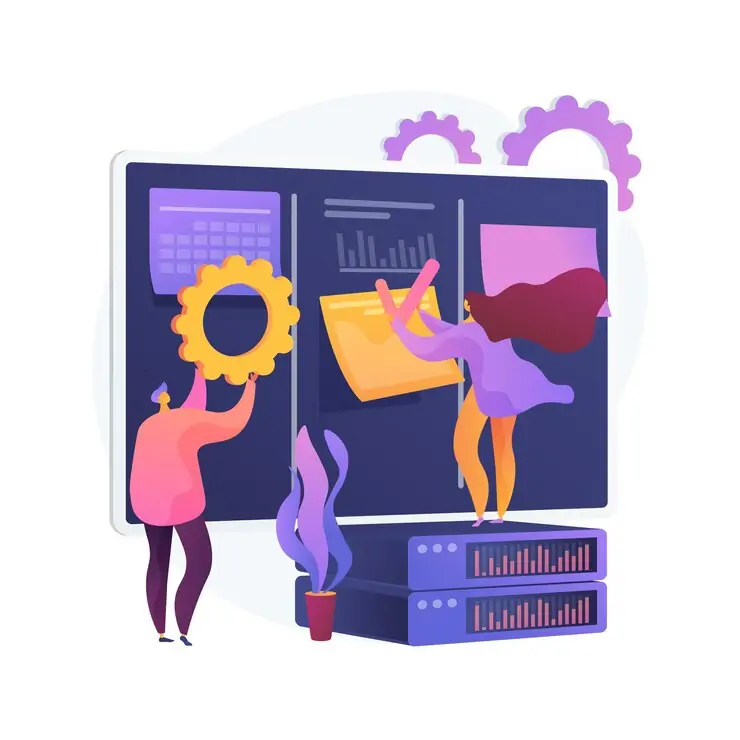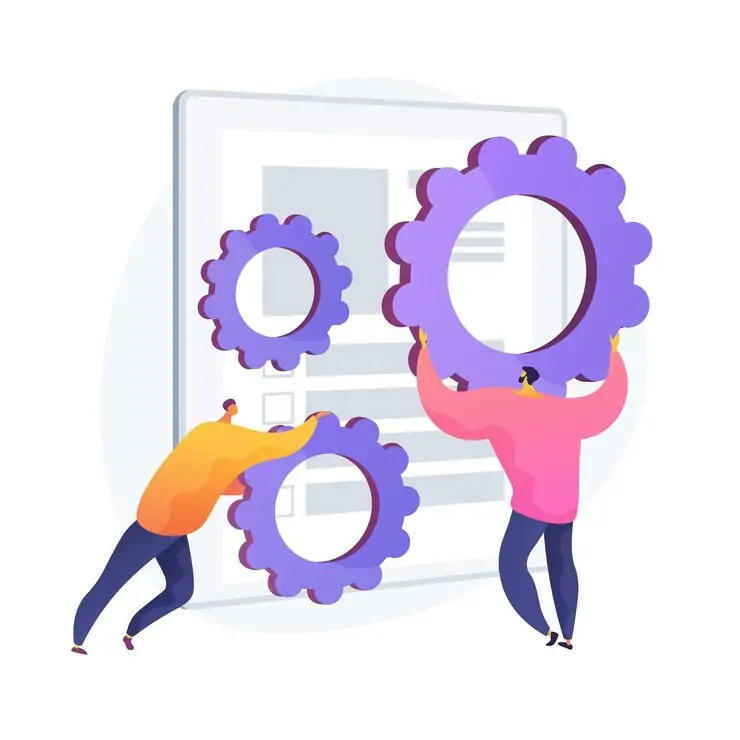
Main Steps of Legacy System Modernization in 2024
Old computer systems, applications, languages, and databases that enterprises still use to manage their business cores or processes are known as legacy systems. With the pace at which the current technological environment is evolving, such systems prove to be inhibitive to progress and evolution for such businesses. It is projected that by the year 2024, the need to upgrade existing systems will be among the most important strategic initiatives of many organizations in their efforts to sustain competition. Here, we detail the main steps that organizations should follow to manage the change process for the successful transformation of legacy systems.
Understanding the Current Legacy System Landscape
Before beginning a modernization project, companies must fully understand their existing legacy landscape. This involves:
Cataloging all legacy systems and applications: Document all systems and interfaces, functions, data flows, technologies, locations, users, and interdependencies. This inventory helps assess modernization scope and priorities.
Identifying pain points: Interview stakeholders to pinpoint legacy pain points like lack of agility, mounting tech debt, compliance issues, and rising maintenance costs. Quantify through metrics like downtime, defects, and time-to-market for new features.
Evaluating business goals: Connect legacy systems to business capabilities and future goals to identify modernization candidates that will provide the most business value.
Making the Business Case for Modernization
The business case gives stakeholders visibility into the rationale for legacy modernization with ModLogix.com, costs, and expected business benefits. Key elements include:
Cost-benefit analysis. Compare ongoing legacy maintenance costs vs. investment needed to rebuild or replace these systems.
Risk evaluation. In case legacy systems remain unchanged, define business, technical, and cybersecurity threats. Also, evaluate modernization risks.
Business goal alignment. Connect existing limitations to your organizational goals such as enhanced customer satisfaction, increased flexibility of IT, fewer security risks, and advancements.
Benchmarking. A survey of industries expects that by 2024, the majority of legacy system modernization initiatives will improve and transform agility and innovation, while others will improve customer experience.
Structuring an Effective Modernization Strategy
With executive buy-in secured, organizations can develop a holistic legacy modernization plan aligned with business priorities. Core aspects involve:
1. Defining target systems architecture – Map out the envisioned to-be architecture, highlighting new tech stack, integrations, data flows, cloud leveraging, and decoupled tiers.
2. Choosing the right modernization approaches – For each legacy area, assess relevant methods like replatforming, rehosting, rebuilding, or replacing with software packages. Also, consider data migration needs.
3. Creating a systems integration strategy – Plan how upgraded legacy components will communicate with each other and other enterprise systems through APIs and middleware.
4. Optimizing for scalability – Design systems to flexibly scale up/down via cloud computing and microservices architectures.
5. Prioritizing quick wins – Sequence modernization roadmap from high visibility, low effort projects to bigger changes for maximum business value.
6. Budgeting and forecasting costs – Estimate program costs over 3-5 years, including licensing, vendor fees, testing, staffing, training, and cultural transition.
7. Minimizing business disruption – Strategize how to modernize without hampering core operations through effective data migration, testing, and failover contingencies.
Selecting the Right Modernization Partners
Few organizations have all the technical skills and resources needed to execute ambitious modernization programs alone. Strategic IT partners provide specialized expertise like:
1. System Integrators
System integrators combine deep legacy understanding with cloud-native development skills to architect and implement comprehensive modernization initiatives. Leading firms also provide managed services for continual optimization.
2. Middleware Specialists
Reconnecting upgraded legacy apps using middleware, and APIs requires niche skills that middleware partners possess. This infrastructure is also key for exposing functions to mobile apps and other channels.
3. Independent Software Vendors
ISVs allow companies to swap legacy systems with readymade, fully featured software packages tailored to industry needs. This avoids complex custom builds.
4. Cloud Providers
Hyperscale cloud providers offer essential IaaS, PaaS, and serverless computing capabilities, plus managed data and DevOps services that accelerate modernization. Cloud also aids the adoption of latest technologies like AI/ML.
When evaluating partners, assess their modernization methodologies, automation tools, solution accelerators, training services, and experience across diverse industries and platforms.
Creating a Future-Ready Culture
Beyond technology, culture transformation is imperative for embedding modern ways of working post-migration. Leadership should drive change management spanning:
Communication: Ongoing interactions on modernization progress, wins, and next steps build stakeholder awareness.
Training: Reskill teams on new processes, tools, and updated legacy systems functionality.
Organizational realignment: Adjust teams, roles, metrics, and reporting structures to support decentralized decision-making and rapid responses.
Agile adoption: Instill agile practices across teams to deliver better software faster through iteration.
Encouraging innovation: Motivate staff to ideate new capabilities and digital offerings leveraging modernized legacy backbone.
Key Legacy Migration Steps
Migrating business logic and data from legacy platforms to new environments represents the most complex stage. This requires meticulous planning and execution across the following:
Data and Interface Migration
Assess data quality
Define data models for target database
Extract data from legacy systems
Transform and cleanse data
Migrate data into a new database
Migrate interfaces and integrate with modern apps
Custom Code Migration
Inventory all legacy code assets and dependencies
Determine code reuse viability for new architecture
Refactor selected code elements for cloud platforms
Recompile code if needed and fix issues
Integrate updated code with new components
Extensively test code migrations
Integration Testing and Debugging
Validate data accuracy post-migration
Perform end-to-end testing across integrated modern ecosystem
Identify and debug any functionality gaps or issues
Conduct user acceptance testing
Refine configurations, scripts, and code until compliant
Cutover Planning
Schedule migration downtime window with the least business disruption
Develop robust cutover plan and rollback contingencies
Migrate in phases, if possible, for large-scale programs
Conduct change management to support user transitions
Realizing Ongoing Value
To achieve enduring impact beyond initial legacy modernization efforts, organizations should embed upgraded capabilities within these continuous improvement processes:
Regular technology upgrades: Revisit infrastructure modernization every 2-3 years to keep up with the latest innovations, such as containers, IoT integration, and predictive analytics.
Continuous data quality improvements: Enable data accuracy, completeness, and governance through master data management, data ops, and persistent cleansing.
Ongoing feature enhancements: Use iterative DevOps pipelines to ship new legacy-connected capabilities, delivering differentiated customer and employee experiences.
Increased automation: Boost productivity by infusing AI/ML and automation throughout legacy and modern application stacks for self-healing, predictive insights, and auto-scaling.
Improved cybersecurity: Apply the latest security controls and policies to legacy and modern environments, conduct frequent audits, and nurture a shared responsibility model.
Agile team empowerment: Sustain modern ways of working through cross-functional feature teams, continuous reskilling, and culture building to spark innovation.
Conclusion
By finally evaluating the state of their legacy estates, building solid migration plans, fostering culture changes, and forming partnerships – organizations can finish the legacy modernization by 2024. This will prepare them with future-proof systems that will allow them to sustain their growth and undertake revolutionary strategies in the coming years. If implemented effectively, these initial upgrades also allow companies to move at a faster pace in adopting transformative technologies even more.




